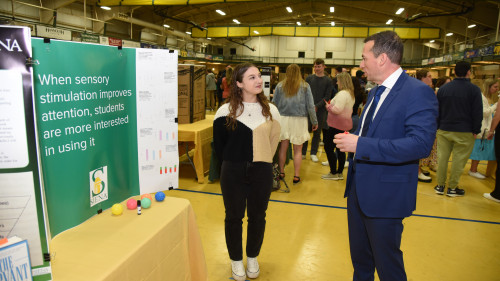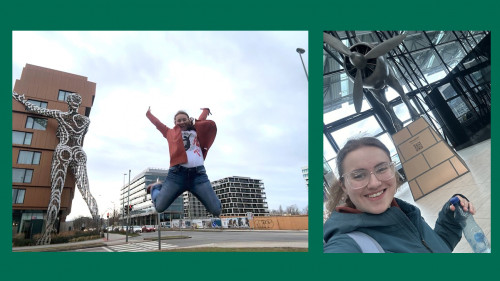
By Mark Adam
It took 13 minutes for Siena’s satellite, Firefly, to be launched into space on November 19 from NASA’s flight facility in Wallops Island, Virginia.
Allan Weatherwax, Ph.D., dean of Siena’s School of Science and the project’s lead scientist, watched the launch on campus with about 40 students and staff on tablets and smart phones from the roof of Roger Bacon Hall. Then, a minute later, they looked up to see the rocket carrying their satellite fly across the night sky.
“All of a sudden, there it was,” Weatherwax said at a press conference the following morning on campus. “It was just a very emotional, energetic time.”
Firefly, which is about the size of a football, was one of 29 satellites sent into space on a Minotaur I rocket for the United States Air Force ORS-3 mission. Firefly will collect data on x-rays and gamma rays from lightning and provide a new understanding of its effects. The CubeSat was designed and built at Siena College in collaboration with NASA’s Goddard Space Flight Center and funded by a $1 million grant from the National Science Foundation.
Nearly 30 students and half a dozen faculty and staff worked on the project together over four years. Many of those students have graduated and moved on to careers and top-flight doctorate programs, including Lindsay McTague ’13. She designed circuit boards in the satellite and traveled to the launch site to get a first-hand look at her work taking flight.
Meghan Harrington ’14, a physics major who watched the launch from campus, designed a radio board for the satellite that sends out signals.
“It was really cool that I designed something that’s now in space,” Harrington said.
Data was expected to be sent from the satellite to NASA and relayed to Siena College. Julian Thomas ’14, a computer science major whose interest in the project has grown as part of an internship, will evaluate the data and send it to another student who will use geographic information systems to plot a map and the effects of lightning.
Weatherwax believes the students who worked on this project will takeoff into successful careers and graduate schools.
“This trumps just about anything else on a student’s resume. This is what they are going to talk about. This is a true experience,” Weatherwax said.



